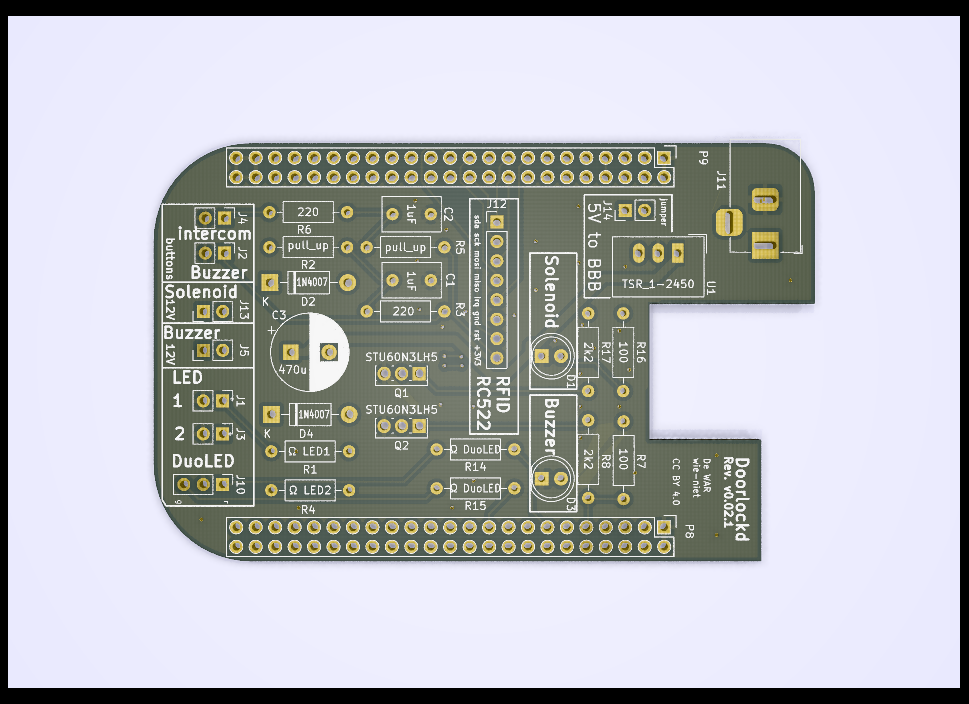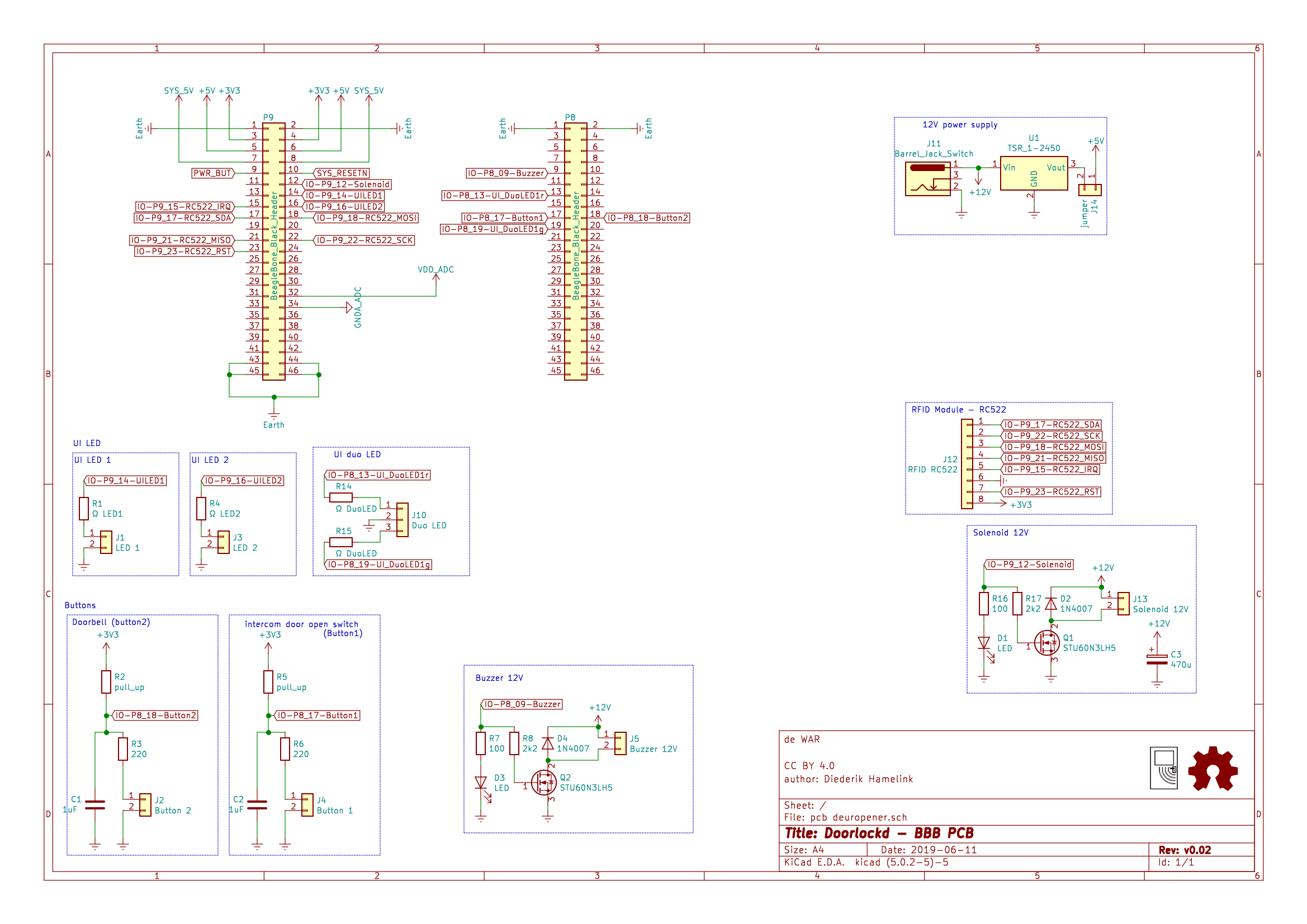Kicad drawing for doorlockd electronics on a Beagleboard black cape.

| Ref | Value | |
|---|---|---|
| C1 | C | 1uF |
| C2 | C | 1uF |
| C3 | CP | 470u |
| D1 | LED | LED |
| D2 | 1N4007 | 1N4007 |
| D3 | LED | LED |
| D4 | 1N4007 | 1N4007 |
| J1 | Conn_01x02 | LED 1 |
| J10 | Conn_01x03 | Duo LED |
| J11 | Barrel_Jack_Switch | Barrel_Jack_Switch |
| J12 | Conn_01x08 | RFID RC522 |
| J13 | Conn_01x02 | Solenoid 12V |
| J14 | Conn_01x02 | jumper |
| J2 | Conn_01x02 | Button 2 |
| J3 | Conn_01x02 | LED 2 |
| J4 | Conn_01x02 | Button 1 |
| J5 | Conn_01x02 | Buzzer 12V |
| P8 | Conn_02x23_Odd_Even | BeagleBone_Black_Header |
| P9 | Conn_02x23_Odd_Even | BeagleBone_Black_Header |
| Q1 | Q_NMOS_GDS | STU60N3LH5 |
| Q2 | Q_NMOS_GDS | STU60N3LH5 |
| R1 | R | Ω LED1 |
| R14 | R | Ω DuoLED |
| R15 | R | Ω DuoLED |
| R16 | R | 100 |
| R17 | R | 2k2 |
| R2 | R | pull_up |
| R3 | R | 220 |
| R4 | R | Ω LED2 |
| R5 | R | pull_up |
| R6 | R | 220 |
| R7 | R | 100 |
| R8 | R | 2k2 |
| U1 | TSR_1-2450 | TSR_1-2450 |
Choose the resistors based on the LEDs you use.
| Led | resistors |
|---|---|
| red | 100 ohm |
| green | 60 ohm |
| yellow | 48 ohm |
| blue | 4 ohm |
| port | chip,line*1 | name | |
|---|---|---|---|
| IO | P8_17 | gpiochip0 27 | Button1 |
| IO | P9_12 | gpiochip1 28 | Solenoid |
| IO | P9_14 | gpiochip1 18 | UILED1 |
| IO | P8_18 | gpiochip2 1 | Button2 |
| IO | P9_17 | gpiochip0 5 | RC522_SDA |
| IO | P9_22 | gpiochip0 2 | RC522_SCK |
| IO | P9_18 | gpiochip0 4 | RC522_MOSI |
| IO | P9_21 | gpiochip0 3 | RC522_MISO |
| IO | P9_15 | gpiochip1 16 | RC522_IRQ |
| IO | P9_23 | gpiochip1 17 | RC522_RST |
| IO | P8_13 | gpiochip0 23 | UI_DuoLED1r |
| IO | P8_19 | gpiochip0 22 | UI_DuoLED1g |
| IO | P9_16 | gpiochip1 19 | UILED2 |
| IO | P8_9 | gpiochip2 5 | Buzzer |
*1): GPIO Chip+line for gpiod, reference taken from https://elinux.org/Beagleboard:BeagleBone_cape_interface_spec

